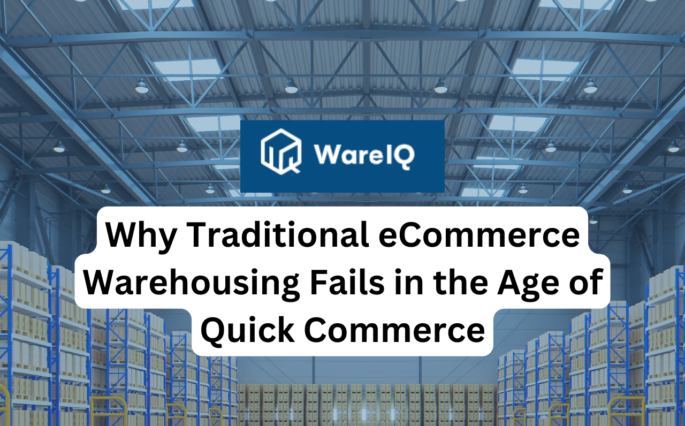Cost-effective Strategies for Clearing Obsolete Inventory


Having adequate inventory to fulfil demand is generally a top priority for most ecommerce firms. Even while it’s usually a good idea to keep some emergency supplies on hand (or to handle an unforeseen rise in demand), buying too much inventory might put your company in danger of holding a product that loses value before it’s sold. Holding on to purchasing inventory that is no longer sellable, often known as outdated inventory, can drastically affect your bottom line.
A product that has reached the end of its lifespan is referred to as obsolete inventory. It occurs when a company believes it is no longer sellable or useable and will most likely not sell in the future owing to a lack of market value and demand. Inventory items often become outdated stock when a particular time period has elapsed and they have reached the end of their lifetime.
Causes of Obsolete Inventory
So, if you’re having trouble determining what’s causing your inventory difficulties and/or reducing excess and obsolete inventory quickly enough, chances are it’s a mix of variables and symptoms. In an aftermarket service parts company, there are many more reasons for excess and outdated inventory than in a manufacturing organisation.
Challenges in Service Demand
- Demand in the aftermarket is influenced by a mix of product, process, and behavioural variables that cannot be forecast precisely in advance.
- As a result, projecting demand for service components is far more difficult than estimating demand for a manufacturing operation.
- Special skills, methods, algorithms, and procedures tailored for a service parts environment are thus required.
- Off-the-shelf systems designed for retail or production applications are inadequate and will result in excessive or insufficient inventory.
Managing Slow-Moving Service Parts
- A “long grey tail” of slow-moving service parts characterises aftermarket service parts ecosystems as well.
- Some industry settings are more hazardous than others. Many companies make the error of attempting to estimate demand for extremely slow-moving commodities when the demand pattern is unpredictable.
- It is often preferable to manage the inventory of slow-moving parts in a completely different manner and avoid attempting to estimate their demand entirely.
Stocking Policies for Varied Service Parts
- Of course, aftermarket repair parts settings comprise not only slow-moving components but also fast-moving and medium-moving parts.
- Faster-moving components are easier to anticipate, quicker to get from suppliers, and might have a variety of additional characteristics.
- As a result, they should have a separate stocking policy for slow-moving commodities.
- Similarly, high-cost components should be stockpiled differently than low-cost ones, and large bulky parts should be stockpiled differently than tiny parts.
Service Part Selection
- Not all of the parts and components utilised in production should be converted into service parts and sold as replacement spares.
- Experience and product knowledge, as well as prior service parts history, should tell you which components wear out or fail and must be replaced.
- Even so, whether a higher-level assembly or the components that comprise the assembly should be sold as a replacement service part is a business choice.
Sales and Marketing Campaigns for Excess Inventory
- Requesting that your sales and marketing teams execute a campaign to sell off excess or outmoded products may be a highly effective means of getting rid of issue inventory.
- Unfortunately, far too many firms execute sales promotions just to increase sales, with little regard for the inventory implications.
- As a result, sales teams purchase more inventory than usual to stock up ahead of their campaign, only to fail to sell as much as they wish owing to overly optimistic campaign planning.
Identification of Obsolete Inventory
| Strategy | Description | Benefits |
| Analyzing Sales Data | Review historical sales data.Identify low sales volumes, declining trends, or high unsold inventory.Use tools like reports, and trend analysis.Adjust inventory levels.Stay updated on market trends. | Prevent obsolete stock.Reduce excess inventory.Stay competitive. |
| Monitoring Product Life Cycle | Track stages: Introduction, growth, maturity, decline.Identify products nearing obsolescence.Adjust inventory levels accordingly.Review sales data, trends, and competition. | Prevent obsolete stock accumulation.Stay ahead of market shifts. |
| Regular Inventory Audits | Conduct physical inventory counts.Focus on low turnover, high unsold, or end-of-life products.Use automated tracking systems.Gain insights for improvement. | Identify discrepancies.Adjust inventory proactively.Improve management.Minimize obsolete inventory risk. |
| Communication with Suppliers and Customers | Stay in touch with suppliers for the latest products.Communicate with customers for preferences and trends.Implement just-in-time strategies.Build strong relationships.Gather feedback. | Access up-to-date products.Adjust offerings based on feedback.Optimize inventory management.Build strong relationships. |
Managing Obsolete Inventory
Regardless matter how hard organisations strive to get rid of outmoded inventory, most will end up with at least a few products they can’t sell. When that occurs, here’s what they can do with that stock, in order of what’s likely to provide the highest financial returns:
Optimizing Sales Strategies
If the things still have a good chance of selling, reconsider how you arrange them. This might involve relocating them in a shop or on a website, or emphasising them in marketing communication to customers. Businesses should also experiment with alternative channels; for example, if specific things aren’t selling in-store, advertise them via social media or online ads that direct customers to the ecommerce site.
Effective Promotions
Promotions are a tried and true method of moving things that aren’t selling as rapidly as intended. While this may reduce profit margins, it provides a greater return on investment than the alternatives indicated below. Start with a little discount and then increase it until the product begins flying off the shelves.
Bundling for Slow-Moving Inventory
Items that do not sell well alone may fare well as part of a bundle. Selling a core item together with two or three related, low-cost extras might assist you in getting rid of slow-moving or superfluous items. To stimulate sales, price the bundle cheaper than the cost of purchasing all three goods separately.
Liquidation for Excess Inventory
Most sectors have liquidators that acquire excess goods at a deep discount and resell it. If you tried retargeting, discounting, and bundling and didn’t sell enough stuff, this is an excellent choice. While the amount paid by liquidators may be at or below cost, it is still preferable to write off outmoded goods as a loss.
Donating Surplus Inventory to Charities
Businesses may be allowed to donate surplus merchandise to charities. This is not only preferable to disposing of the materials, but it may also qualify organisations for a tax benefit equal to the cost of those products. This choice is more applicable to merchants and wholesalers who sell completed items than to manufacturers or suppliers who work with raw materials.
FAQs
How to get rid of obsolete inventory?
To get rid of Obsolete Inventory you can sell them, bundle them with other products, liquidate them, or donate to Charity.
How to identify obsolete inventory?
You can identify obsolete inventory by Analysing sales data, Monitoring product life cycle, Regular Inventory Audits, and Communication with Suppliers and Customers.
How to reduce excess and obsolete inventory?
To reduce excess obsolete Inventory you can Consign your product, Divert it to new products, Scrap it, or Trade with industry partners.
How to write off obsolete inventory?
The cost of no-value inventory items is removed from the accounting records by writing off inventory. Inventory should be written off when it becomes outdated or when the market price has decreased below the cost reflected in the accounting records.








